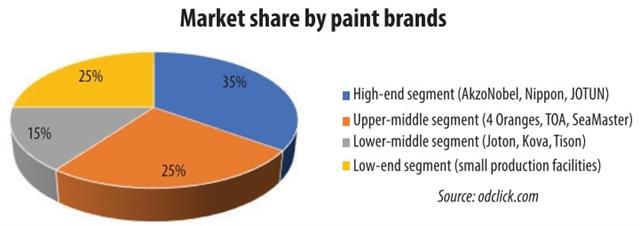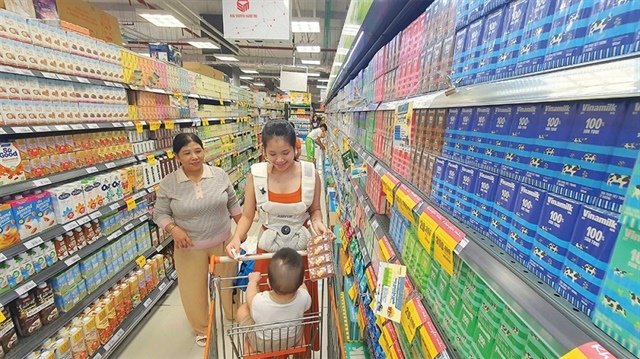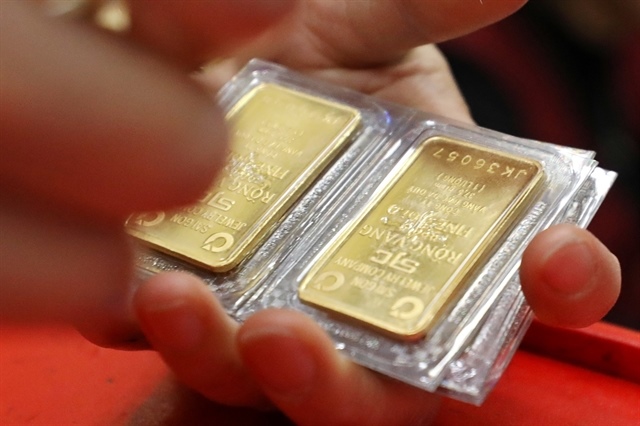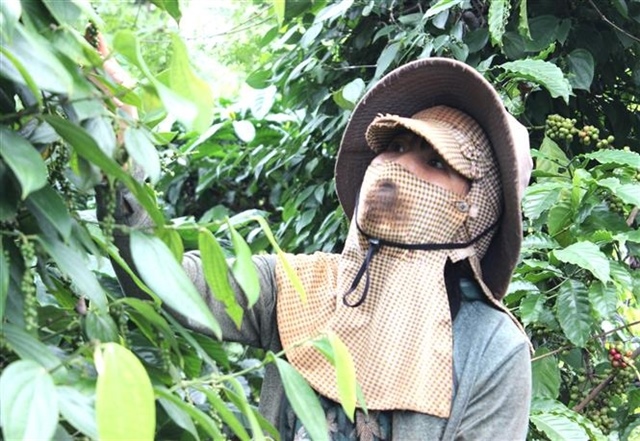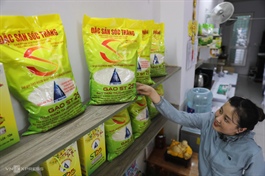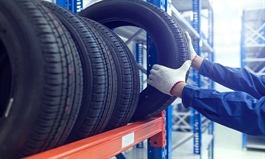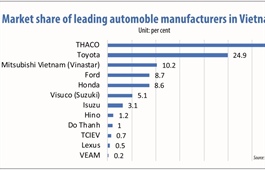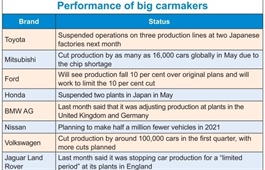Paint makers’ fresh coat of progress
Paint makers’ fresh coat of progress
Having one of the fastest-growing paint and coating industries in the Southeast Asian region, Vietnam is mainly dominated by international paint and coating groups, but it is now witnessing a refresh as local makers attempt to gain some traction.
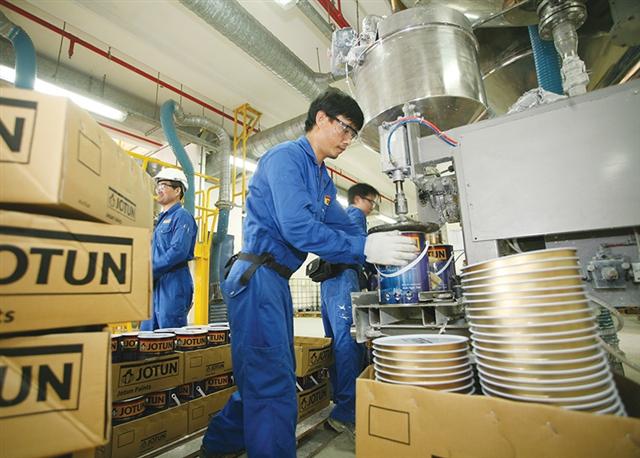
Paint makers’ fresh coat of progress
|
Japan-based Nippon Paint Group has released its new three-year strategy in which it announced plans to construct a resin factory in Hanoi. “We already have a paint factory in Vietnam that started operations a few years ago and the addition of the resin factory will strengthen our supply chains in Asia,” said a company representative.
Nippon Paint Vietnam has been in the domestic market for more than 25 years, as one of the earliest paint brands in the country. Here, Nippon Paint has built and put into operation three factories in Hanoi, its neibouring province of Vinh Phuc, and the southern province of Dong Nai specialising in the production of both decorative and industrial paint.
The Vietnamese paint and coating industry has seen huge investments in capacity expansions in recent years, including leading multinational paint and coating producers such as AkzoNobel, JOTUN as well as regional players like 4 Oranges Co., Ltd. and Toa Paints.
According to the Vietnam Paint-Printing Ink Association, foreign paint makers account for 65 per cent of the market.
Foreign paint and coating makers covers all kinds such as painting airports, ships, and coatings of galvanised steel and wood. With advantages in technology and finance, foreign paint producers are a common choice for the architectural and general industrial coating segment that accounts for more than 62 per cent of the Vietnamese paint and coating market on a volume basis.
Under Vietnam’s plan for developing the paint and ink industry until 2020 with a vision to 2030, the average growth rate in production value of the paint and ink industry reaching 14 per cent in the period from 2021 to 2030 and the proportion of production value of the paint and ink segment in the whole chemical sector will increase from 11 per cent in 2012, 11.5 per cent in 2020, and 12 per cent in 2030.
Last year major player JOTUN celebrated the launch of Essence Easy Clean, a new interior product in the medium category in Vietnam, Thailand, Malaysia, Singapore, and Indonesia.
In its 2020 report, the Norwegian paint company noted its investment in production capacity and research and development (R&D) facilities in the year. Investment has mostly been related to new production facilities in Vietnam and Egypt, facility upgrades in Norway and the Czech Republic, construction of new regional headquarters and R&D facility in Dubai, and finalisation of the same in Norway. Expected to be completed this summer, the construction of JOTUN’s new $100 million water-based and powder coatings factory is taking place in Hiep Phuoc Industrial Park of Ho Chi Minh City, with capacity of 85 million litres water-based paints and 10,000 tonnes of powder coatings.
“The construction of a new factory in Vietnam is on budget and on schedule,” noted the report.
It added that the pandemic caused significant declines in sales activity in the second quarter of 2020, especially in Southeast Asia and the Middle East where JOTUN has a strong market presence. However, by quickly implementing business continuity measures at company factories and offices and utilising digital technologies to strengthen relationships with key stakeholders, the company posted another year of positive results in the decorative paints segment.
In Vietnam, JOTUN has been in the market since 1993. Initially, the company entered only with imported products, operating mainly in the field of industrial paint and marine works. However, it veered towards decorative paint a decade later when it was one of the first paint makers in Vietnam to introduce state-of-the-art colour mixing technology.
Business expansion into ASEAN markets with extensive experience is indicative of a potential growth from foreign investment, infrastructure development, and utilities as well as ever-increasing urbanisation, according to the group. This is expected to boost the demand for both decorative paint and coating products and non-decorative paints and coatings.
|
Fresh focus
Over the last few years some domestic companies have become very competitive, including Kova Paint Group, Dong Tam, Alphanam, Hoa Binh, among others. These domestic companies even dominate the market in smaller cities and rural areas.
For instance, choosing a product line aimed at the popular segment but manufactured in accordance with Japan’s leading standards and technology, locally-invested Alphanam Group has been on a journey to refresh the Vietnamese paint and coating market.
The demand for civil construction such as residential houses and apartment buildings remains key for Alphanam. Kansai-Alphanam has launched two sets of interior and exterior paint products for the popular segment with modern technology, fresh colours, guaranteed quality, and durability according to Japanese standards.
While industry experts believed that brand is one of the most important factors in the paint market, the issue of price and the suitability to climatic conditions of each region is of increasing concern, especially for large projects. That is an opportunity for domestic paint makers to seize.
According to the current production value, construction coatings take up a large proportion at 54 per cent, while industrial coatings products have been in increasing demand because of industrialisation.
Nguyen Thi Hoe, chairman of the board at Kova, confirmed that the domestic market has been fiercely competitive and cannot deny the advantages of foreign paints. However, Kova’s position in the market is currently strong and its paints are deemed worthy enough to compete, Hoe said. Kova attracts consumers with a series of new features such as fire resistance, antibacterial, dust-proof, and even bulletproof paint.
Kova began to dominate the retail market for non-decorative waterproofing in Vietnam five years ago, but its first factory was established in Hanoi in 1998. In 2007, Kova also entered the non-decorative protective coating market with its metallic paint and coating products and the following year the company expanded to Cambodia. Currently Kova comprises nine member companies and five high-capacity paint and coating manufacturing plants; four are located in Vietnam and one in Cambodia.
|
Consensus being reached on harmful paint lead limits The first mandatory technical regulations restricting lead limits in paints and varnishes in Vietnam aims to prevent negative human health effects as well as push innovation in the country’s paint sector. The Ministry of Industry and Trade (MoIT) has published the national regulations which will come into effect on July 1 next year. Under Circular No.51/2020-BCT, paint and varnish products in Vietnam must contain less than 500 parts per million (ppm) of lead. From 2027, paint and varnish products in the country must contain less than 90ppm of lead. This regulation is more relaxed than its draft, which set out to reduce lead content limits to 90ppm over a three-year period only. The new rules will apply to manufacturers, importers, and distributors of paints and varnishes, and labelling to be carried out in accordance with Decree No.43/2017/ND-CP released in 2007 on goods labelling. Lead can be found in decorative paints for interiors and exteriors of homes, schools, and public and commercial buildings, as well as on toys, furniture, and in playgrounds. As of the start of this year, nearly 80 countries have legally binding controls in place to limit the production, import, and sale of lead paints, while another 26 are in the early or final stages of drafting laws, according to a United Nations Environment Programme (UNEP) report. Studies have shown that lead in paints is known to lower IQ and increase behavioural problems. It can also cause anaemia, increase the risk of kidney damage and hypertension, and impair reproductive functions, with young children and pregnant women are especially vulnerable. The negative impacts on children’s developing brains also have significant economic costs, including healthcare costs, productivity losses, and intellectual disability. While the cost of removing existing decorative lead paints from surfaces in homes, schools, and other buildings can be substantial, the economic cost is low for eliminating the use of lead compounds in new decorative paints, according to the UNEP. UNICEF warned last year that over 3.2 million children in Vietnam could have dangerous levels of lead in their blood that may cause irreversible health damage, not helped by high amounts of lead content in paints and varnish products in the country. Lead content in paints is safe for human health and the community as recommended by the World Health Organization, if lower than 90ppm. Nations such as the United States, Canada, the Philippines, Israel, and more have followed the recommendation. However, according to the MoIT, Vietnam has needed time for producers to prepare to meet new regulations. Nguyen Thi Lac Huyen, chairman of the Vietnam Paint-Printing Ink Association, said that greener chemicals are an inevitable trend and most business are aware of this and will accept higher costs. But she warned that it is likely that countries in the region will still have inventories of lead-containing materials for export to Vietnam for some time to come. |


